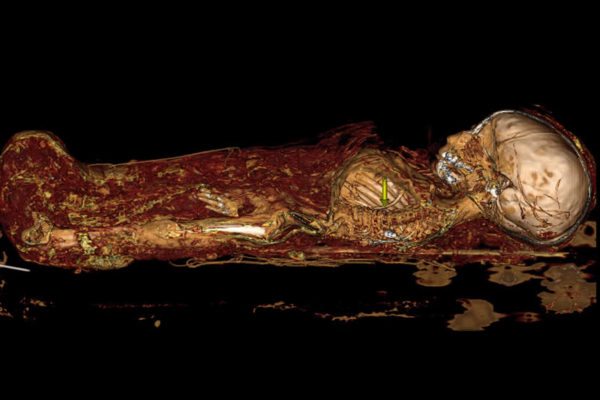Scanning for clues to our ancient past
The mummified remains of a 7-month-old baby boy and pieces of skull from two teenage Triceratops underwent computed tomography (CT) scans Sept. 16 at the School of Medicine, in hopes researchers could learn more about the ancient past.
Picture emerges of how kids get head injuries
A study in which more than 43,000 children were evaluated for head trauma offers an unprecedented picture of how children most frequently suffer head injuries, report physicians at Washington University School of Medicine and the University of California, Davis, School of Medicine.
Three Egyptian mummies receive CT scans
Washington University School of Medicine recently teamed up with the Saint Louis Art Museum and the university’s Mildred Lane Kemper Art Museum to scan some very unusual patients: three Egyptian mummies.
Chest X-rays don’t reduce lung cancer deaths
A major U.S. study shows that annual chest X-rays to screen for lung cancer do not reduce the risk of dying from the disease, even in smokers or former smokers. More than 150,000 older Americans were involved in the clinical trial, funded by the National Cancer Institute, with about 16,000 enrolled at Washington University School of Medicine in St. Louis. Results of the study will be published Nov. 2 in the Journal of the American Medical Association.
New imaging techniques help guide liver surgery
Image courtesy of William C. Chapman, M.D.William Chapman monitors his surgical instrument’s position on corresponding CT scans during liver surgery.Despite being the largest vital organ in the body, the liver has very few identifiable landmarks to help guide a cancer surgeon around its surface. Two-dimensional ultrasound images currently are the standard navigational tool, making it difficult to discern depth and location in the liver during surgery to remove tumors. That’s why a research team led by William C. Chapman, M.D., professor of surgery and chief of the Abdominal Transplantation Section at Washington University School of Medicine in St. Louis plans to launch trials examining the use of three-dimensional imaging techniques to complement ultrasound during liver surgery. The research team will investigate standard three-dimensional imaging techniques like MRI, CT scanning and PET for guiding surgeons during tumor removal surgery.

